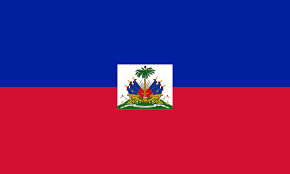Haiti flag Colors Code hex, png svg
The flag of Haiti has a rich history and symbolism rooted in the country’s struggle for independence and identity. Here is an overview of its history, colors, and meanings:
History
- Early Colonial Era: During the French colonial period, Haiti used the French tricolor flag.
- Independence Movement: The modern Haitian flag’s origins trace back to the Haitian Revolution (1791-1804). Jean-Jacques Dessalines, a leader of the revolution, is credited with creating the flag. Legend says he took a French tricolor flag and tore out the white section, symbolizing the removal of white colonizers.
- Initial Design: The resulting flag had blue and red horizontal stripes. This design was adopted on May 18, 1803, at the Congress of Arcahaie, marking the day as Haitian Flag Day.
- Variations: Over the years, the flag has seen several variations. Notably, from 1806-1811, the flag included a red and black design under Henri Christophe, and the blue and red stripes returned with the establishment of the Republic of Haiti.
- Current Design: The current design, which includes the national coat of arms in the center, was adopted in 1986 after the fall of the Duvalier dictatorship.
Colors and Meanings
- Blue:
- Symbolism: Represents the African heritage of Haiti’s people and the union between black Haitians and mulattoes (people of mixed African and European ancestry).
- Historical Context: The blue stripe replaced the blue and white stripes of the French flag, signifying a break from colonial rule.
- Red:
- Symbolism: Represents the blood shed for independence and the sacrifices of the Haitian people.
- Historical Context: The red stripe similarly replaced the red and white stripes of the French flag, underscoring the revolution’s violent struggle.
- Coat of Arms:
- Design: The coat of arms features a palm tree topped with the Phrygian cap of liberty, surrounded by flags, cannons, and other symbols of independence.
- Motto: The motto “L’Union Fait La Force” (“Unity Makes Strength”) is inscribed on a white scroll, emphasizing the importance of unity in the nation’s history and future.
Summary
The flag of Haiti is a powerful emblem of the country’s independence, unity, and resilience. The blue and red stripes, combined with the symbolic coat of arms, reflect Haiti’s unique history and the enduring spirit of its people.
Guess the Flags Quiz
Sharing is caring 🤗

National Symbols 👇
- 🏁 National Flags
- 🦁 National Animals
- 🐦 National Birds
- 🌻 National Flowers
- 🌴 National Trees
- 🥭 National Fruits
- 🍹 National Drinks
- 👴 National Founders
- ☘️ National Emblems
- 🍲 National Dishes
- 🏛️ National Monuments
- ✍️ National Poets
- 🕌 National Mausoleums
- 🎺 National Instruments
- 🦸 National Heroes
- 📆 National Days

